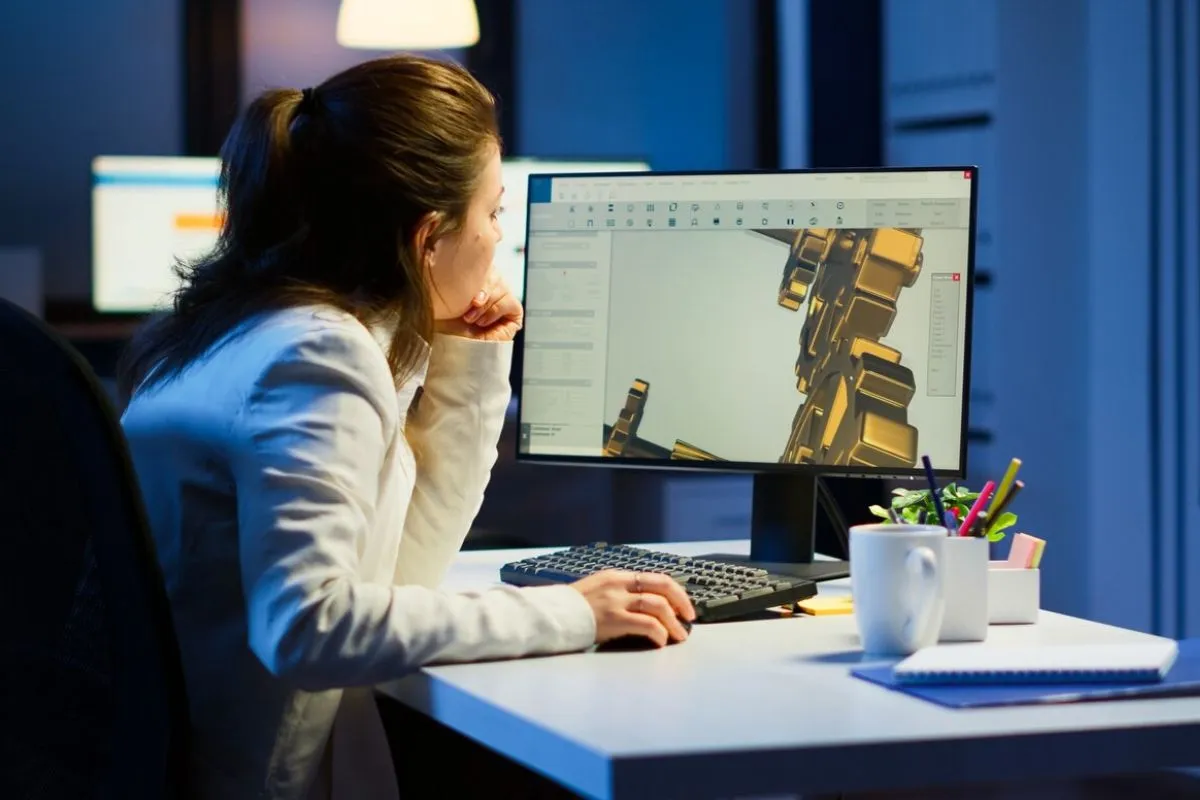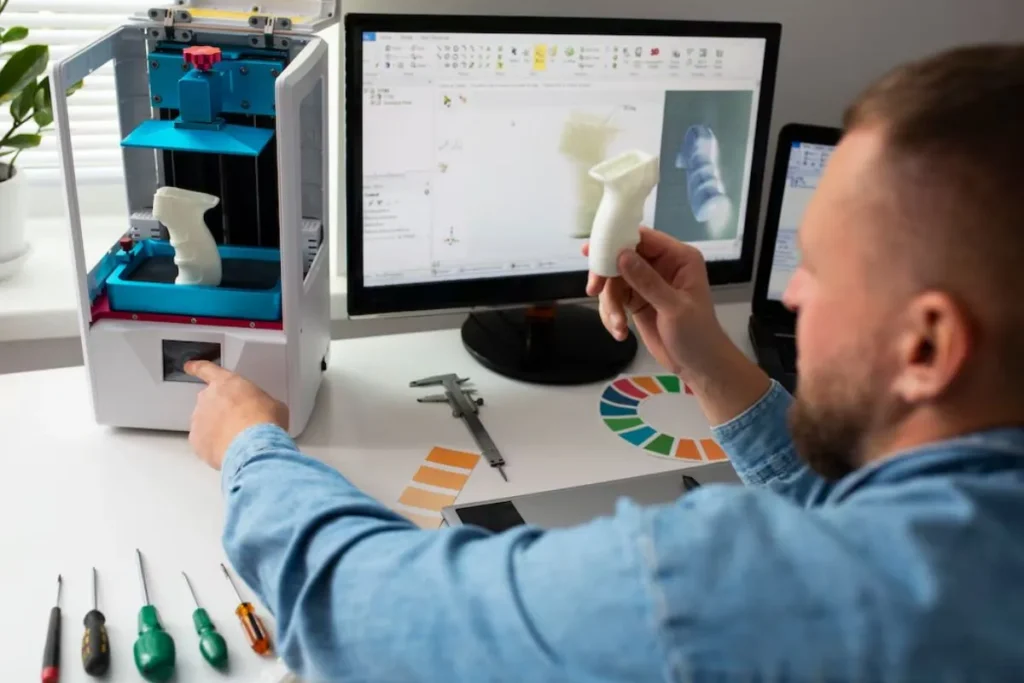Using CAD Software for Complex 3D Printing Projects can revolutionize the efficiency and precision of your design process. As 3D printing technology advances, leveraging CAD software becomes central to achieving superior outcomes.
In this article, we’ll explore key strategies for maximizing efficiency with CAD software. We’ll also deep dive into tools and tips for high-complexity 3D printing projects.
Read on to discover insights on how to enhance your design process. Unlock the full potential of your 3D printing endeavors.
Understanding the Role of CAD in 3D Printing
Computer-Aided Design (CAD) software is a cornerstone in the realm of 3D printing. By using CAD, designers can create detailed and precise models that would be impossible to achieve manually.
CAD software allows for modifications and testing of designs in a virtual environment. This significantly reduces the trial-and-error traditionally associated with physical prototypes.
The seamless integration of CAD with 3D printers facilitates a smooth transition from digital design to physical object. This integration is crucial for complex projects where precision is non-negotiable.
Key Advantages of Using CAD Software
CAD software offers several benefits for complex 3D printing projects:
- Precision: Allows for high accuracy in design, ensuring parts fit and function correctly.
- Efficiency: Speeds up the design process by reducing the need for physical prototypes.
- Flexibility: Easy modification of designs, encouraging innovation and adaptability.
These advantages are particularly valuable in fields such as aerospace, automotive, and medical devices. Here, complex geometries and stringent specifications are common.
Tips for Maximizing Efficiency with CAD Software
Invest in High-Quality Software
Using inadequate software can hamper your project’s success. Opt for reputable CAD software known for its reliability and advanced features.
Popular choices include AutoCAD, SolidWorks, and Fusion 360. These platforms offer extensive toolsets for designing intricate models.
Investing in good software not only enhances your work quality but also saves time in the long run. Free alternatives often lack the crucial features needed for complex projects.
Create a Structured Workflow
Efficiency in using CAD software for complex 3D printing projects hinges on a well-structured workflow. Plan each phase of the design process meticulously.
Organize your design files logically, use version control, and document changes. This reduces errors and improves collaboration among team members.
Incorporate regular reviews and testing phases to catch issues early. Early detection of design flaws prevents costly rework later on.
Mastering Advanced CAD Techniques
To tackle complex projects, proficiency in advanced CAD techniques is essential. This includes skills such as parametric modeling, surfacing, and assembly design.
Parametric modeling allows for easy adjustments to dimensions and features. This is particularly useful in iterating designs rapidly.
Surfacing techniques help in creating smooth, intricate surfaces required in automotive and consumer product designs. Mastering these skills enhances your ability to handle complex shapes and details.
Tools to Enhance Precision and Design
Precision is paramount when using CAD software for complex 3D printing projects. Leveraging the right tools can make all the difference.
Simulation and Analysis Tools
Integrating simulation tools within your CAD workflow can significantly improve the reliability of your designs. Software like ANSYS and COMSOL Multiphysics offer robust simulation capabilities.
These tools enable you to analyze stress, thermal properties, and fluid dynamics. Understand how your design will perform under real-world conditions.
By simulating the performance, you can optimize the design before printing. This reduces material wastage and enhances product functionality.
Detailing and Documentation Tools
Detailing tools in CAD software help in adding fine details to your design. These include text, patterns, and intricate geometries.
Documentation tools are equally important. They generate technical drawings and specifications needed for production and quality control.
AutoCAD and SolidWorks, for instance, offer comprehensive detailing and documentation features. These tools ensure that every aspect of the design is well-documented and ready for production.
Utilizing Add-ons and Plugins
Add-ons and plugins can extend the functionality of your CAD software. Tools like MeshMixer and TinkerCAD offer additional features beneficial for complex models.
These plugins can assist in mesh editing, sculpting, and even organic modeling. They bridge the gap between CAD design and 3D printing-specific adjustments.
Experiment with different add-ons to find the ones that best suit your project needs. They can significantly improve your workflow and final product quality.
The Future of CAD Software and 3D Printing
The landscape of CAD software and 3D printing is continuously evolving. Advancements in technology are driving new possibilities.
AI and machine learning are being integrated into CAD tools. These advancements promise to automate complex tasks and enhance design capabilities.
Furthermore, the rise of cloud-based CAD software, such as Onshape, is enabling greater collaboration. Designers can now work seamlessly across different locations and devices.
Advancements in Materials
Not only is the software evolving, but the materials used in 3D printing are also advancing. High-strength composites and bio-compatible materials are now available.
These materials open up new applications and industries for 3D printing. Complex geometries that were previously unachievable are now possible.
Staying updated with the latest material advancements is crucial. It ensures that your projects benefit from the best available options.
Integration with Other Technologies
3D printing is increasingly being integrated with other technologies. For instance, augmented reality (AR) and virtual reality (VR) are enhancing design visualization.
These integrations allow designers to interact with their models in immersive environments. This improves understanding and aids in identifying potential issues early.
Similarly, the Internet of Things (IoT) is enabling smarter manufacturing processes. Machines can communicate and optimize production in real-time.
Custom-Made Solutions
With advancements in CAD and 3D printing, the trend towards custom-made solutions is growing. Personalized products, tailored to individual needs, are becoming commonplace.
This shift is particularly evident in the healthcare sector. Custom implants, prosthetics, and even tissues are being developed using CAD and 3D printing technologies.
The ability to design and print customized products opens up endless possibilities. It enhances user satisfaction and addresses specific needs with precision.
Final Thoughts: Embracing the Future
Utilizing CAD software for complex 3D printing projects is a gateway to innovation. With the right tools and strategies, the possibilities are truly endless.
Adopting advanced CAD techniques, leveraging the latest tools, and staying updated with technological advancements will keep you ahead in the game.
Embrace these insights and enhance your design and 3D printing endeavors. Your journey towards efficiency and precision begins now.
Ready to take your projects to the next level? Explore more advanced CAD tools and techniques!
Frequently Asked Questions
What is the best CAD software for 3D printing?
Popular choices include AutoCAD, SolidWorks, and Fusion 360. They offer comprehensive features suitable for complex projects.
How does simulation benefit 3D printing projects?
Simulation tools analyze your design’s performance under real-world conditions. This helps in optimizing the design before printing.
Can I use free CAD software for complex projects?
Free CAD software may lack advanced features. Investing in quality software is advisable for high-complexity projects.
How do add-ons enhance CAD software functionality?
Add-ons and plugins provide additional features like mesh editing and sculpting. They enhance the functionality of your base CAD software.
What is the future of CAD software in 3D printing?
Advancements like AI, cloud-based solutions, and integration with AR/VR are set to revolutionize CAD software capabilities.



